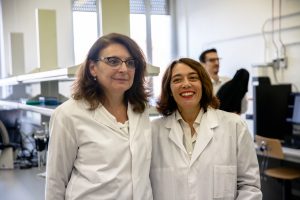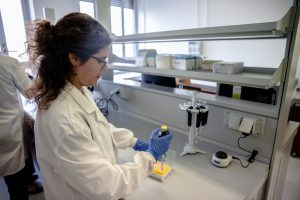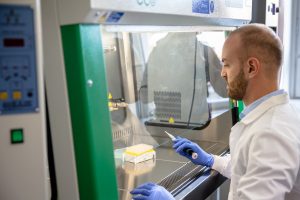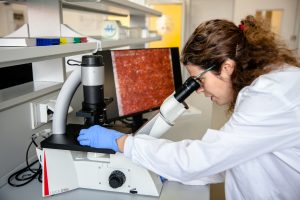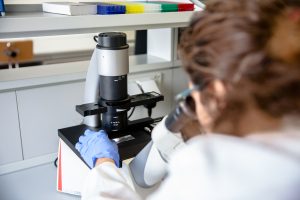The 17th of October 2019 two new laboratories of the Politecnico di Milano, “MINERVA” and “ATHENA”, called “TechnoBiology” labs, have been officially presented to the scientific community.
The main purpose of the TechnoBiology labs is to provide forefront technological devices and cellular models for the study of biochemical mechanisms that involve multiple organs and biological systems of our body, both in physiological and pathological conditions, such as the microbiota-gut-brain axis.
The laboratories, funded by the ERC MINERVA project, are fully equipped with up-to-date instruments for the development of organ-on-a-chip devices capable of hosting advanced in vitro models based on cells (Laboratory MINERVA) and bacteria (ATHENA Laboratory) grown both in 2D and 3D.
With 100 square meters of floor space, the TechnoBiology labs are hosted in the Leonardo Campus on the second floor of the “Giulio Natta” Department of Chemistry, Materials and Chemical Engineering of the Politecnico of Milan (Italy) next to the existing MechanoBiology labs in a new research area collectively called Biology labs.
On the day of the inauguration, the Vice Rector of the Politecnico di Milano Prof.ssa Donatella Sciuto, the Director of the “Giulio Natta” Department Prof. Maurizio Masi, Prof. Manuela T. Raimondi, and Prof. Carmen Giordano, PI of the MINERVA project presented the new laboratories to the invited participants and Prof. Pasquale Striano, medical director of IRCSS “G. Gaslini” of Genova, spoke of still unresolved clinical problems involving the cross-talk between intestinal microbiota and brain function in which a strongly interdisciplinary approach could make the difference.
“In our vision, this new experimental unit will become a virtuous example of an interdisciplinary working area where engineers, biologists, biotechnologists and clinicians operate together to tackle new, complex technological and scientific challenges” (Carmen Giordano, PI of the ERC MINERVA project).
————————————————————————————————
This project has received funding from the European Research Council (ERC) under the European Union’s Horizon 2020 research and innovation programme (grant agreement n. 724734).

